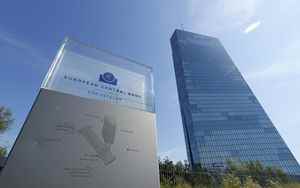(Finance) – During the press conference of President Christine Lagarde it became clear that in the March meeting the European Central Bank (ECB) tried to do a synthesis between the two extreme positions within the board of directors, that is, those who favored nothing and wait for developments (in particular the conflict in Ukraine) and who, on the other hand, were inclined to act without any conditionality towards the end of quantitative easing (QE). The result was however one more hawkish position: while it is true that the ECB keeps all options on the table and will continue to be guided by the data, it is undeniable that a decisive step towards normalization monetary policy. In all of this, in light of the uncertainties of the war between Russia and Ukraine, investors were hoping instead for an easing of monetary policy. Instead, Frankfurt confirmed the gradual conclusion of its QE program (which will gradually decrease to 20 billion monthly purchases in June and may cease in the third quarter) and also left open the possibility of a rate hike.
The balance between doves and hawks
According to many observers, during the press conference of President Lagarde, the discussion between the two souls within the ECB emerged clearly. “Some members wanted to continue on the road to the end of QE, without other changes. Others would have preferred not to announce anything and take time – noted Pasquale Diana, Head of Macro Research at AcomeA SGR – In the end, the ECB decided to create room for maneuver (the optionality to which Lagarde referred several times in the press conference). How? In two ways. First, paving the way for a potential QE hike in the third quarter if needed. But most of all, weakening the link between the end of QE and the rate hike“.
“On the hawk front, the ECB is aiming for one slightly faster than net asset purchases and removed the reference to lower interest rates from the forward guidance on interest rates. of the end of net asset purchases, if justified, and any rate cycle would be gradual. “” The The ECB’s monetary policy normalization path may buckle but likely not breakunless Europe falls into recession – added the manager – In the medium term, the ECB will aim to end net asset purchases and return to a reference rate of zero, with little ambition beyond that ” .
The update of the estimates on GDP and inflation
Frankfurt has also significantly updated its macroeconomic forecasts. “This is a delicate exercise for Christine Lagarde, as the central bank has on the one hand revised its growth expectations downwards due to the war, and on the other hand has raised its inflation forecast to 5.1% for the 2022, at 2.1% for 2023 and 1.9% in 2024 – said Nicolas Forest, Candriam’s Global Head of Fixed Income – It should be noted that the revision for 2022 is one of the highest ever“.
“For 2022, the economic growth of the Eurozone was revised downwards, from 4.2% to 3.7%, and the change in inflation was even greater, revised upwards from 3.2% to 5, 1% – said Roberto Rossignoli, Portfolio Manager Moneyfarm – This change in projections has profound consequences on monetary policy decisions and, in this context, the decision to accelerate on the reduction of purchases of government bonds is not out of place, even if it certainly surprises the investors who expected the ECB to perhaps give more weight to reducing growth prospects than to the increase in inflationary pressures “.
The modification of the forward guidance on rates
An aspect to underline, according to Luca Mezzomo, head of macroeconomic analysis of Intesa Sanpaolois that ECB has changed forward guidance on rates in two aspects. “The first is formal: the possibility of rate cuts is no longer mentioned – he explained – The most significant change is that the sequence has been changed, signaling that the rate hike will take place” some time after “the end of the purchases. net – a formulation more easily manageable from a communicative point of view than the previous one, where the time of the rate hike was determined by the conditions and the end of the purchases took place shortly before. Furthermore, the hikes will be “gradual”. Several times, the president he remarked that the exact time will be determined by the data, and not by the calendar. Given the uncertainty of the scenario, the new formulation allows to better adapt the normalization step to the circumstances “.
